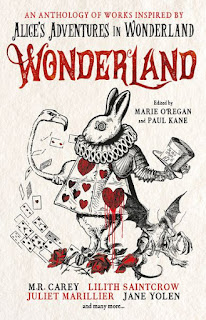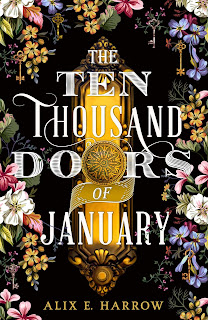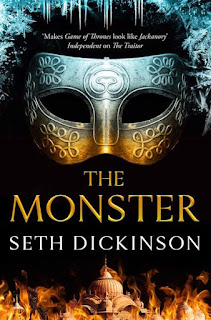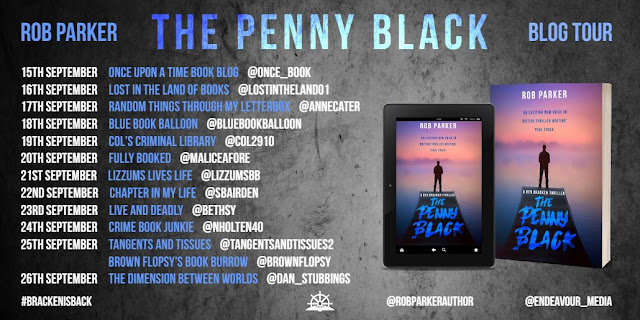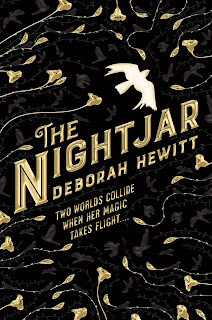 |
| Cover: illustration by Edward Benson, design and lettering by Hannah Wood, LBBG |
Orbit, 26 September 2019
PB, 466pp
I'm grateful to Orbit (hello Nazia!) for a free advance copy of The Bone Ships to consider for review.
Tell of the sea, Topboy...
Well.
This book wasn't just a read, it was a journey.
A voyage.
A passage.
If, like me, RJ Barker burst onto your SFF radar a couple of years ago with his Wounded Kingdom trilogy, stories of assassins and cursed magic, then you will be expecting good things - and you won't be disappointed. But you might not be expecting something quite so nautical as The Bone Ships. It seems a risky thing for an author to take to something so different - such. different element - but it's a risk that has paid off here, in a rollicking story that succeeds, and more than succeeds, that triumphs, with bags of aplomb, heart-thumping tension and (of course) much dark humour.
Barker has, you might say, conquered the seas.
The Bone Ships is set in an oceany world, a world of islands and reefs where two powers - the Hundred Isles and the Gaunt Islands - are perpetually at war. In this world there is no wood: ships - necessary for trade and for war - are built from the bones of great sea-dragons, Arakeesians, which have, inconveniently, been hunted to extinction. So the two nations' fleets squabble, seizing ships back and forth as the stock of bone for beams and spars dwindles. Other things are seized as well. It's a harsh world, where child sacrifice is bound with the safety of the Fleet and the place of every woman and man is determined by fitness for breeding or for service in the Fleet.
Barker really gets under the skin of his invented world, laying out details of the bone- built, slate-decked vessels, of the culture, the religion, the taboos and shame. Walking that world is his hero Joron Twiner, condemned, like many others, to service on a Black Ship, to infamy and eventual death. Joron has suffered a loss that leaves him fearful and addicted to drink and he leads a crew of murderers, thieves and scoundrels - yet it's this beggarly lot who are chosen to hunt the last Arakeesian when rumour of it comes back to Shipshulme. But not before Joron loses his command and finds a mentor, the redoubtable and mysterious Shipwife, Lucky Meas, herself condemned to the Black Ships
As the crew are hammered into shape by Meas, RJ embarks us on a great adventure, complete with naval battles, spies, treachery, and strange alliances. Reading this gave me a feeling I haven't had for years, the same sense of space and possibility and achievement as when I first read CS Forrester's Hornblower stories. Like those books, The Bone Ships is as much about the building of human connections as it is about spars, wind or salt waves. It's about forging trust, about men and women developing competence, learning to work well together, overcoming differences and creating routines that will withstand the ultimate tests of battle and storm. It's about a crew forming, and how you can make that happen. This is all, at first, mysterious to Joron - he begins as a rather self-pitying creature - so the story is very much also about his growing up.
Barker captures all this perfectly, as he does the particular rhythms and cadences of a whole way of life. I don't know how but in writing of Tide Child and the other ships he has created an authentically nautical language, full of wind, waves, orders, shipboard terms and behaviours that simply convinces but - and this is the important bit - without coming over as sub Treasure Island pirate talk. It's a recognisable language but doesn't use terms you will have heard. The ship's sails are "wings", the ships have "seaward" and "landward" sides, sailors are "deckchilder" and so on.
Barker makes it all so real, whether he's describing how to handle one of the great crossbow mounted on Tide Child's deck, how the ship is cleared before battle, or the rituals and moments of ship life - the Shipwife leading prayers, or the singing of a shanty:
I've always loved the sea, my love
So deep and blue and true
I've always loved the sea, my love
As much as I loved you
Barker could - as much as Melville, Forrester or London - be reporting what he'd seen and heard aboard ship himself, so convincing and engaging is it. I don't think he's served three years before the mast, but you never know...
And that's not all this book has! It has layers and layers besides. There is the pitiless, endless war. There is (some) chance for peace. There is suspicion. There is a whole aspect of the plot to do with the origin of the arakeesians, and the strange, and sad, weather-manipulating creatures called the Gullaime.
And there is the most involving, gut-clenching naval combat I'd read for years.
The Bone Ships simply took my breath away, especially in its second half, where we face one shock after another and see Joron, no longer a cast-off wretch, facing dark choices and taking responsibility. It's an enthralling read and is one of my favourite books of 2019 so far.
For more about The Bone Ships and to buy a copy, see the Orbit website here.


